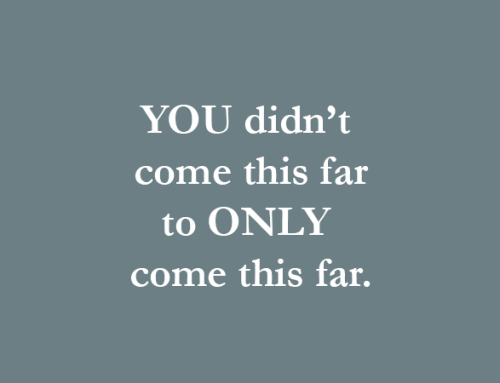
Conflict in the workplace is inevitable.
As a senior executive or CEO, you may find yourself in the midst of tensions between departments, personality clashes among team members, or even personal disagreements that threaten productivity.
You may recognize the frustration in statements like:
“I have a conflict with X, and it is causing me a lot of stress.”
“Our team is constantly fighting among themselves.”
“We could get a lot more done if we didn’t have so much friction.”
While some conflict is necessary for innovation and collaboration, unproductive disputes can derail your team, weaken morale, and impact business performance. The problem won’t fix itself—it requires leadership, strategy, and action.
Every leader faces conflict. What separates great leaders from average ones is how they handle it. Will you let unresolved tensions disrupt your company’s progress, or will you take the necessary steps to turn conflict into a catalyst for growth and alignment?
The Cost of Unresolved Conflict in the Workplace
Unchecked conflict in an organization leads to:
Decreased productivity – When team members are distracted by ongoing disputes, their focus and efficiency suffer.
Higher turnover – A toxic workplace drives talented employees to leave.
Poor decision-making – Teams that avoid conflict entirely risk making weak, unchallenged decisions, while those stuck in constant disputes struggle to move forward.
Erosion of trust and morale – Persistent tension damages team relationships, making collaboration difficult.
On the flip side, healthy conflict—where different perspectives are debated constructively—can be an engine for innovation, stronger decision-making, and business success.
The key is not to eliminate conflict but to manage it effectively.
Why Leaders Must Take Ownership of Conflict Resolution
As a senior leader, you set the tone for how conflict is handled in your organization. If conflicts are ignored, they fester. If they are mishandled, they escalate. You must take an active approach to conflict resolution, not just for your own leadership credibility but for the overall performance and culture of your company.
The Best Practice Approach to Conflict Resolution
Executive Coaching helps senior executives with tools, techniques and a structured conflict resolution process that transforms destructive disputes into productive conversations.
The Process has Three Main Phases
Understand the situation – define the Other Party’s position and codify your own
Identify the preferred outcome – leaders must lead towards the outcome that is ideal for the business. What is this ideal outcome and is there common ground here?
Preparation for decisive moments – develop a Conflict Resolution Strategy, consider possible scenarios and prepare thoroughly for the key moments
Understand the Situation to Resolve Conflict
1} Respect the Other Party’s Position
Before attempting to resolve a conflict, you must understand the other person’s perspective.
Gather data don’t make assumptions!
Skilled Executive Coaching can help leaders analyze:
- What motivates the other party in this situation?
- What pressures or incentives might make them willing to compromise?
- What values and priorities drive their position?
- What external factors are influencing their behavior?
Emotional Intelligence is key – practice empathy: people who are emotionally intelligent are skilled at understanding how someone else may feel in certain situations. It’s important to try to understand the perspectives and emotions of others, even if you do not agree with them. Reflecting with a Coach on the Other Party’s position can help senior leaders see things from their point of view and help you Respect differences in the other person.
Be empathetic and non-judgmental. Whether or not you think the other person’s feelings are justified, they’re real to that person. Pay attention to them.
Focus on feelings. Facts are important, and how a person feels is key. Watch and listen carefully for the other person’s real message.
Gathering this insight and reflecting on it allows for a more strategic, empathetic approach to resolving disagreements.
2} Consider and Codify Your Own Position
Resolving conflict requires reflection and a conscious decision to act. This means reflecting on your own stance is essential.
Self-awareness and a willingness to adjust, breaks deadlocks, and sets the stage for real progress. Coaching helps executives to conduct this self-reflection with honesty and integrity.
You must know your own boundaries and those of the other protagonists.
It may be painful. You may need to recognize if past actions have contributed to tension and what amends need to be made.
Identify the Ideal Outcome to Resolve Conflict
1} The Ideal outcome
Fundamentally, to create a good pathway you must define and be able to express the ideal resolution. You are responsible for moving the company forwards. You own making progress towards the vision – What does success look like ion this conflict situation?
Don’t away shy from defining the non-negotiables, the bigger goals – you need to make commercial progress. Here, working with a Coach can help you choose wisely what you insist upon, identify where you can be flexible and where you need to stand firm.
2} Identify Common Ground
A thinking partnership with a Coach also helps you find the common ground to resolve conflict.
Agree on facts. It’s important to establish ground rules and build consensus by agreeing on the basic facts of a conflict. If you can be methodical about agreeing to the basic components of a conflict, working toward a mutual solution is a much easier process.
Look for the root cause. Working with a Coach as best you can, build a timeline with disputants to see if you can work your way back towards the origin of a conflict. Isolating the cause of a dispute can often simplify the resolution process.
Look for win-win solutions: Try to find solutions that are mutually beneficial to all parties involved. This can quickly dissipate ill feeling.
Respect differences. Values, belief systems. Alternative perspectives. Even in the most heated conflicts, shared interests exist. We help leaders identify:
- Mutual business goals that both parties are invested in.
- Common values and principles.
- Overlapping visions for the future.
By focusing on identifying what unites rather than divides, we create a pathway toward resolution.
Prepare for the High Stakes Moments to Resolve Conflict
1} Develop a Conflict Resolution Strategy
Once the groundwork is laid, we guide executives through selecting the best tactic for resolving their specific conflict. Approaches may include:
- Active listening – Engaging the other party to understand their concerns before responding
- Making amends – Owning past mistakes and demonstrating a commitment to change
- Negotiation – Offering compromises that create win-win outcomes
- Third-party mediation – Bringing in an unbiased expert (such as Herald Strategy) to facilitate resolution
- Influencing through allies – Engaging respected individuals who can help shift perspectives
Each conflict requires a tailored approach.
2} Scenario Planning for Conflict Resolution
Conflict resolution rarely unfolds smoothly. Preparation with a Coach builds confidence in achieving the desired outcome and prepares you.
We coach leaders to:
- Predict potential objections from the other party
- Prepare responses that keep the conversation productive
- Develop contingency plans if initial attempts don’t succeed
- And Evaluate Communication Styles
Communication styles can often be central to conflict.
We help leaders analyze:
How does the other person communicate?
How do your own communication habits affect the conflict?
What adjustments can you make to connect more effectively with the other person?
It is often the case that small shifts in communication style can lead to major improvements in conflict resolution.
As part of this focus on communication. Often, we recommend leaders engage in role-playing exercises with the Coach to simulate difficult discussions. This practice builds confidence, refines messaging, and prepares you for real-world execution.
What If Conflict is a Cultural or Team-Based Issue?
Sometimes, conflict isn’t just between two individuals—it’s broader. It may be between functional leadership. It may exist between heads of departments.
If a leadership team struggles with conflict, we focus on the leader’s role in helping achieve conflict resolution. We help the CEO or senior leaders evaluate:
What are you tolerating that allows conflict to persist?
Are you setting clear expectations for team behavior and communication?
Do roles and responsibilities need to be adjusted?
How can you coach team members to resolve their own conflicts?
Every conflict starts as a person-to-person issue even when whole departments are at loggerheads. We help the CEO or senior leaders shape company culture to encourage healthy conflict resolution, to create more cohesive, high-performing teams.
Insight: Conflict Won’t Resolve Itself—Leaders Must Act
One of the biggest leadership mistakes is believing that workplace conflict will resolve itself over time. It won’t.
Conflict that is ignored or mismanaged leads to:
Decreased team performance
Poor employee engagement
Higher turnover
Damaged leadership credibility
Taking a proactive approach is the only way to ensure that conflict serves as a constructive force rather than a destructive one.




